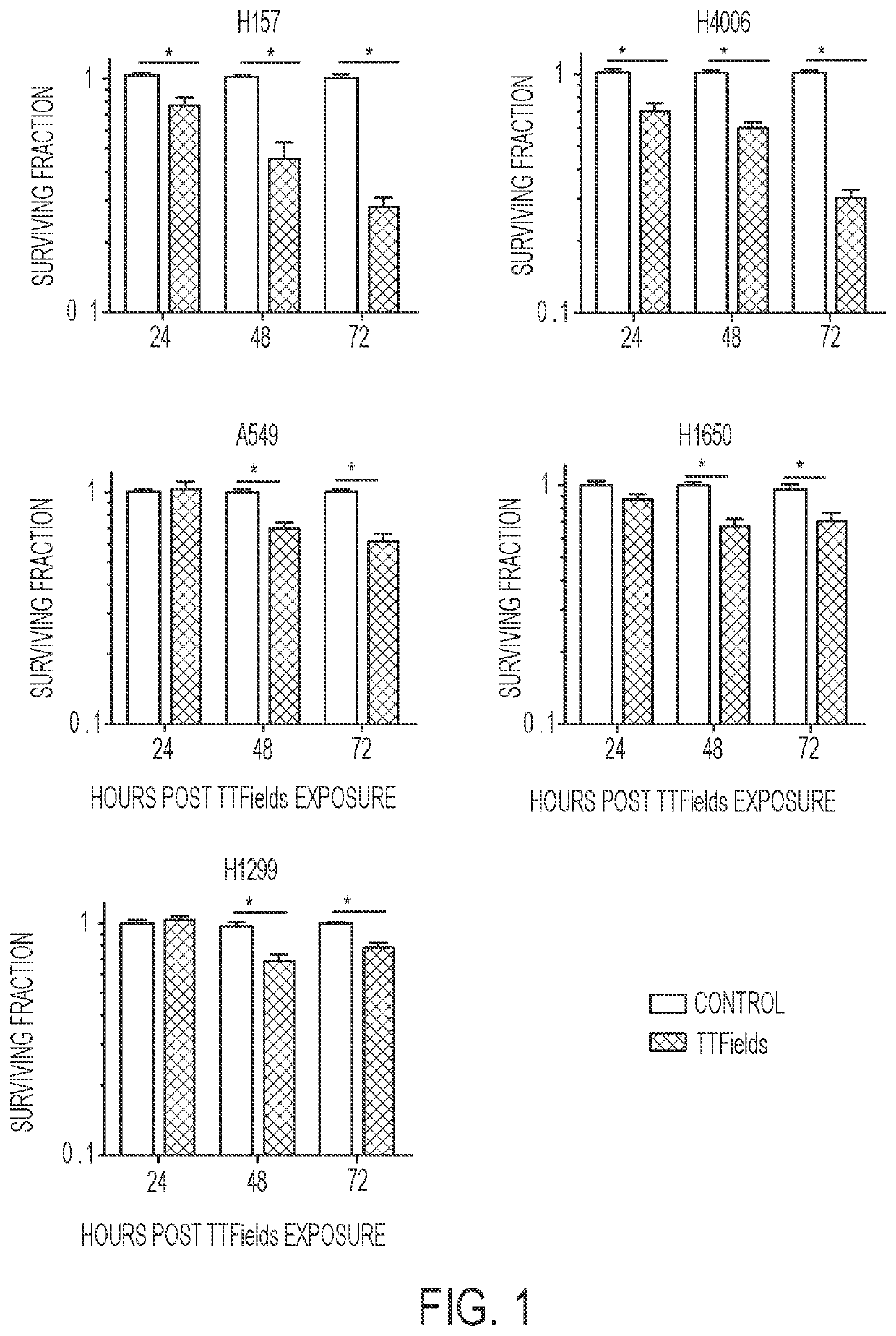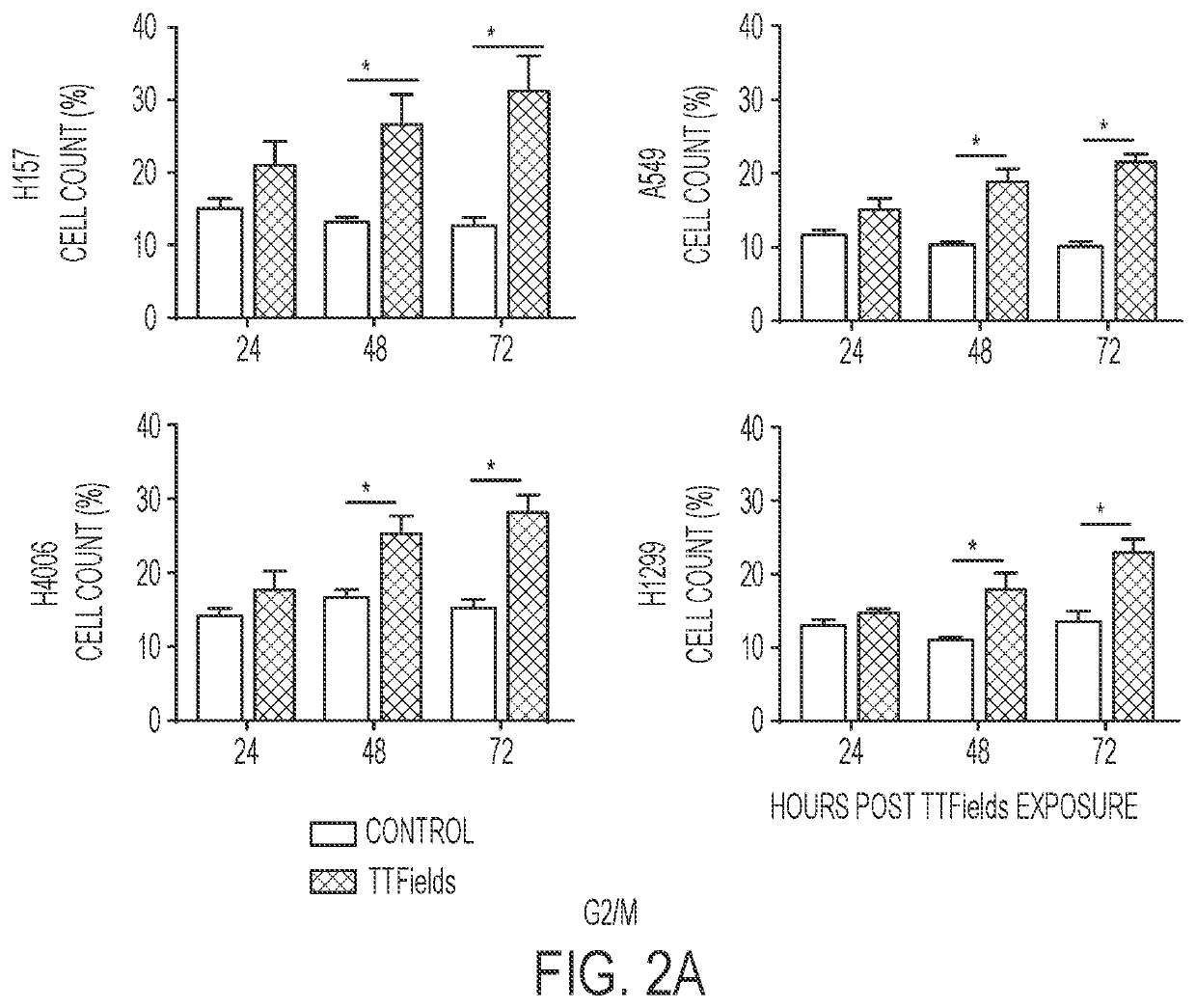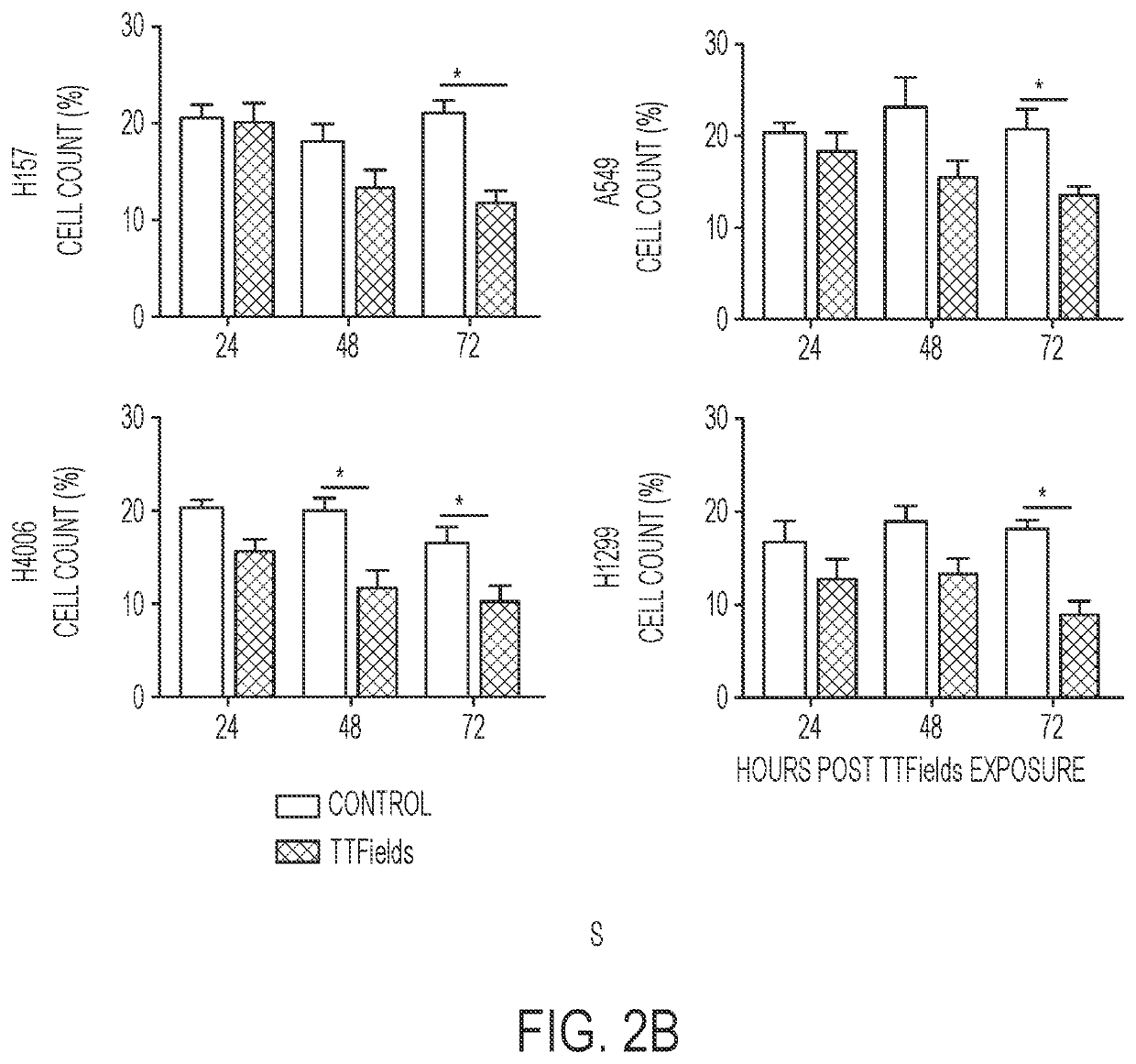Treating Tumors Using TTFields Combined with a PARP Inhibitor
a technology of parp inhibitor and tumor, which is applied in the field of treating tumors using ttfields combined with parp inhibitors, can solve the problems of not stimulating nerves and muscles, not generating high levels of heating,
- Summary
- Abstract
- Description
- Claims
- Application Information
AI Technical Summary
Benefits of technology
Problems solved by technology
Method used
Image
Examples
Embodiment Construction
[0026]Tumor-Treating Fields Elicit a Conditional Vulnerability to Ionizing Radiation (IR) and PARP Inhibitors Via the Downregulation of BRCA1 Signaling and Reduced DNA Double-Strand Break Repair Capacity in Non-Small Cell Lung Cancer Cell Lines: The use of tumor-treating fields (TTFields) has revolutionized the treatment of recurrent and newly diagnosed glioblastoma (GBM). TTFields are low-intensity, intermediate frequency, alternating electric fields that are applied to tumor regions and cells using non-invasive arrays. The predominant mechanism by which TTFields are thought to kill tumor cells is the disruption of mitosis. Using five non-small cell lung cancer (NSCLC) cell lines, the inventors found that there is a variable response in cell proliferation and cell killing between these NSCLC cell lines that was independent of p53 status. TTFields treatment increased the G2 / M population, with a concomitant reduction in S-phase cells followed by the appearance of a sub-G1 population ...
PUM
 Login to View More
Login to View More Abstract
Description
Claims
Application Information
 Login to View More
Login to View More - R&D
- Intellectual Property
- Life Sciences
- Materials
- Tech Scout
- Unparalleled Data Quality
- Higher Quality Content
- 60% Fewer Hallucinations
Browse by: Latest US Patents, China's latest patents, Technical Efficacy Thesaurus, Application Domain, Technology Topic, Popular Technical Reports.
© 2025 PatSnap. All rights reserved.Legal|Privacy policy|Modern Slavery Act Transparency Statement|Sitemap|About US| Contact US: help@patsnap.com



